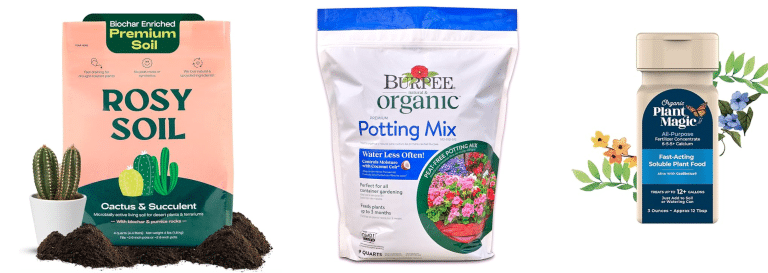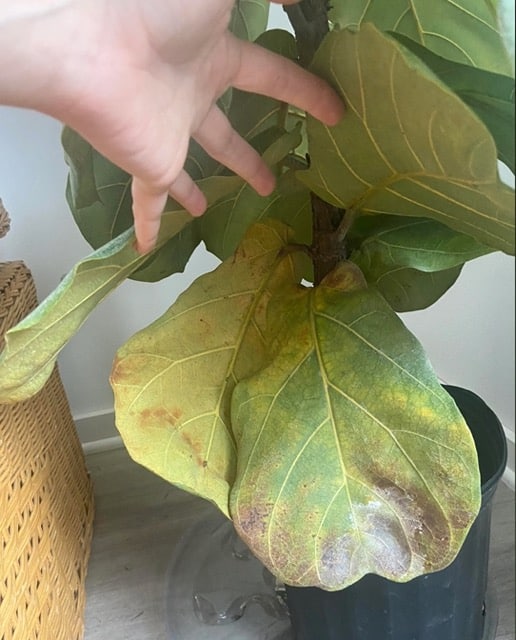Ultimate guide to styling low light indoor trees
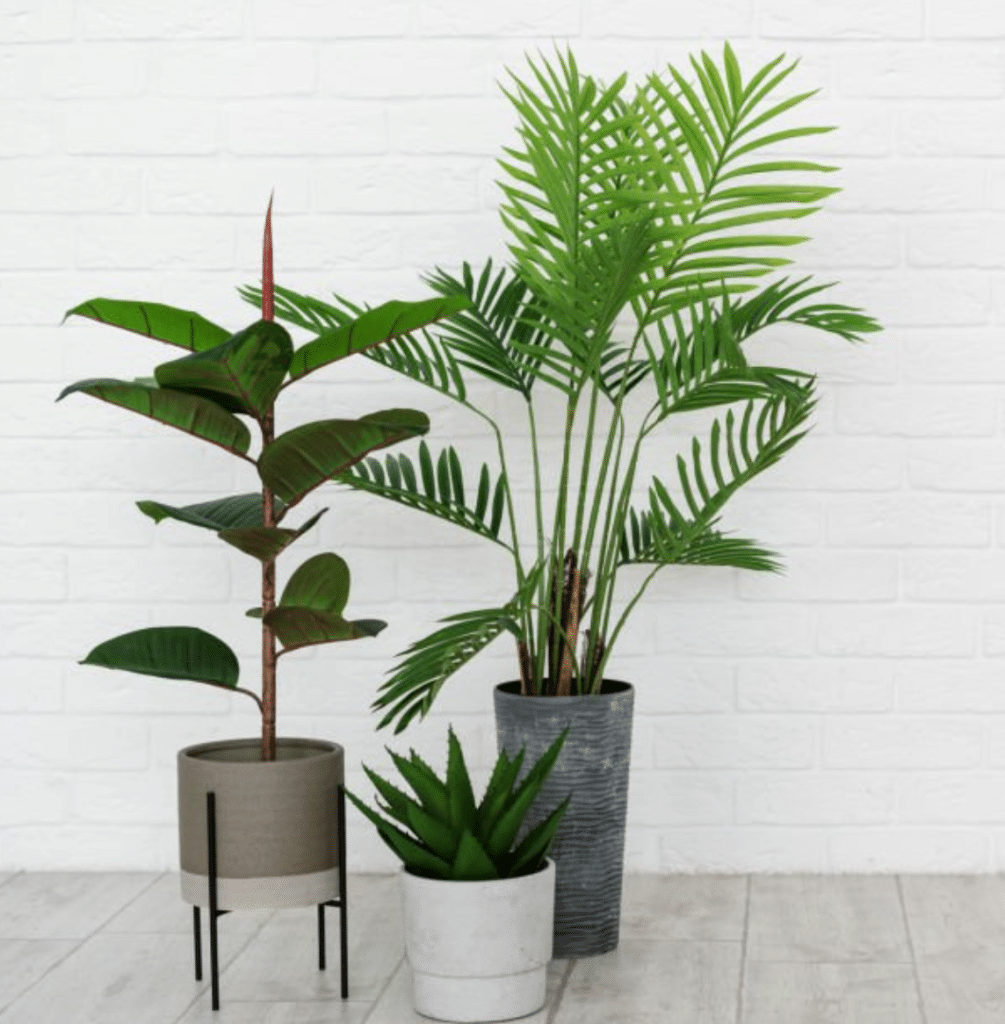
When you purchase through links on our site, we may earn an affiliate commission, which helps sustain our blog!
Not all homes are flooded with natural sunlight, but that doesn’t mean you can’t have a lush, green space! Low-light indoor trees like the Lady Palm, Weeping Fig, and Corn Plant can thrive in dim spaces if styled correctly. The key is choosing the right planters, placement, and complementary decor to highlight their natural beauty. Whether you’re working with a cozy apartment, a dimly lit office, or a north-facing living room, this guide will show you how to make your low-light trees a design feature. Let’s get started!
Choosing the Right Planter for Your Low-Light indoor Tree
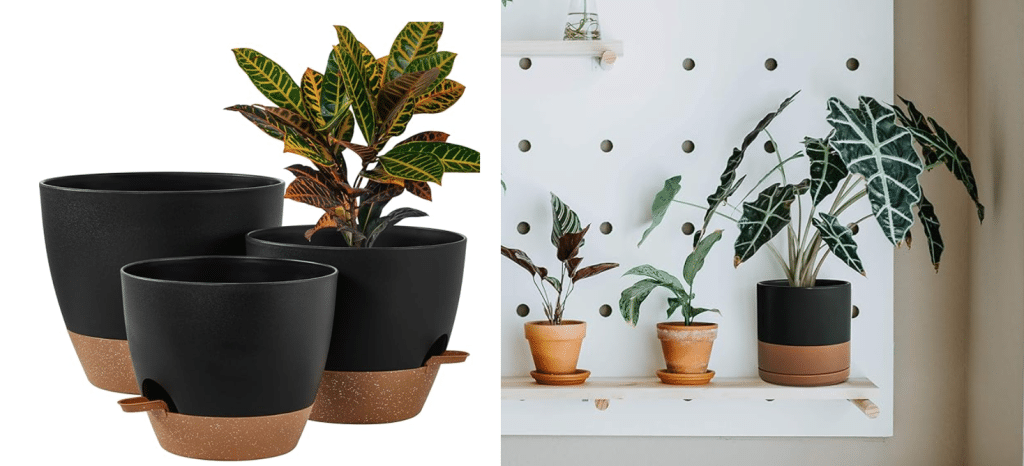
Best Planter Materials for Low-Light Trees
Low-light trees tend to need less frequent watering, so the planter material can help regulate moisture. Ceramic and terracotta pots are great because they allow for some breathability, preventing excess moisture buildup. If you tend to forget to water, a concrete or wood planter is a better bet because they retain more moisture.
Fabric pots might seem like an odd choice for a tree, but they allow good airflow to the roots, which can prevent root rot—one of the biggest killers of indoor trees in low light.
Read also: our guide to watering low light indoor trees
Size Matters: Getting the Right Proportions
Ever seen a tiny tree drowning in an oversized pot? It’s like putting a toddler in an adult-sized raincoat. A planter that’s too big holds excess moisture, increasing the risk of root rot. On the flip side, a pot that’s too small can restrict growth and lead to root binding
The sweet spot: A planter 1-2 inches wider than the current root ball. If you want a decorative look with a big, statement pot, use a cachepot—a stylish outer pot that holds a functional, well-fitted nursery pot inside. This way, you get the aesthetic without sacrificing the right size for the tree’s health. We also recommend checking how tall does your low light tree get before making the decision, to plan ahead.
Self-Watering vs. Traditional Pots: Which Is Better?
For a while, we swore by self-watering pots as a generic solution for all houseplants—until we realized they can actually overwater low-light trees. Trees like the Weeping Fig or Bamboo Palm need their soil to dry out a bit between waterings, and self-watering pots can make the soil consistently damp, which invites root rot.
If you prefer traditional pots, just stick to a regular watering schedule and check the top inch of soil before adding more water. we like to use a moisture meter for our low-light trees—no more guessing if the soil is dry just because the top looks dusty.
Matching Your Decor: Finding the Right Aesthetic
A good planter doesn’t just keep your tree happy—it also ties together your space. For a modern look, sleek ceramic or concrete planters in neutral tones keep things clean and stylish. Rustic spaces look great with wooden or terracotta pots, adding warmth and texture. If you’re into boho decor, woven baskets as cachepots create a relaxed, cozy vibe.
Match the planter to the furniture, not just the plant. If you have a dark wood side table, go with a deep brown ceramic planter. If you’re ever in doubt, white or black planters are foolproof—they work in any setting and let the tree be the star.
Pairing Low-Light Trees with Other Plants for a Layered Look
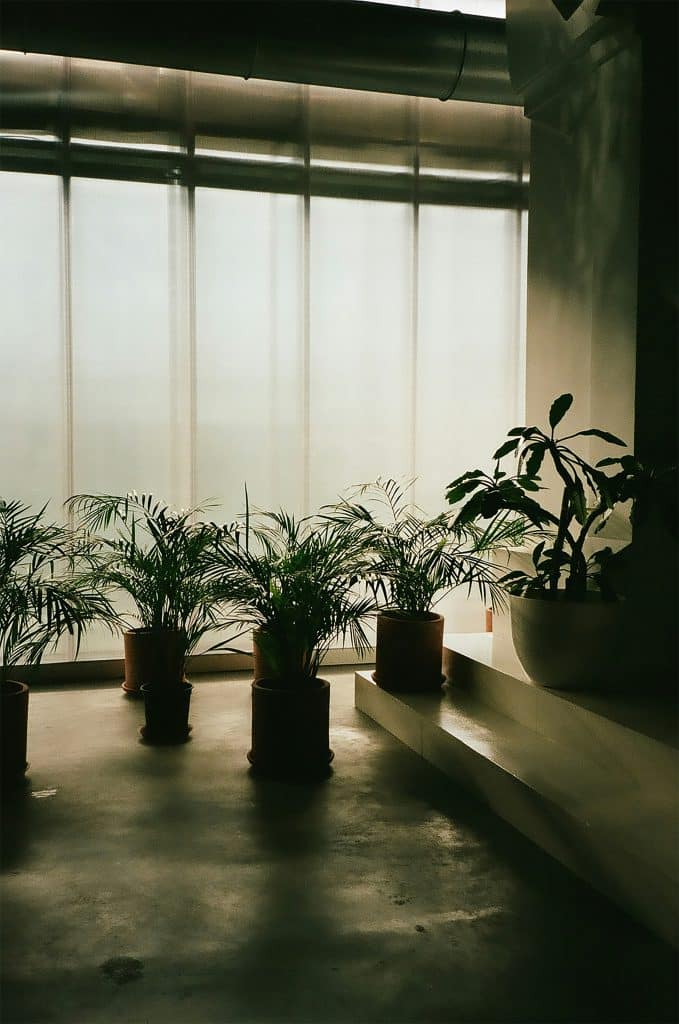
Trailing Plants for Contrast
One of our favorite tricks for softening a tall tree’s look is pairing it with trailing plants like hanging pothos or Tradescantia. These vines spill beautifully over the edge of a planter stand or a nearby shelf, adding movement and a bit of wildness to the setup. Our Dracaena looked too rigid until we placed a golden pothos nearby, letting its vines cascade down.
If we’re working with a low-light space, we go for Heartleaf Philodendron or Scindapsus, both of which thrive in dim conditions and drape beautifully. One trick that works wonders? Hanging a trailing plant on a floating shelf near the tree. It draws the eye up, creating layers without taking up more floor space.
Smaller Tabletop Plants to Complement Large Trees
Large trees can dominate a space, but smaller tabletop plants help balance the scene. We like to place a Chinese Evergreen, Peace Lily, or compact Snake Plant on a side table or plant stand next to our taller trees. It bridges the height gap between the tree and the furniture, making everything feel intentional and cohesive.
Placing a lush Peperomia with a compact Calathea, makes rounded leaves add softness, and the whole space feels more inviting.
Grouping Different Textures: Broad, Spiky & Feathery Foliage
Mixing textures is the real secret to making an indoor plant arrangement pop. If everything has the same smooth, broad leaves, it can look too uniform. If everything is spiky, it feels chaotic. The best displays balance broad, spiky, and feathery foliage to create contrast.
- Broad-leaf trees (Rubber Tree, Fiddle Leaf Fig) pair well with spiky plants like Dracaena or Snake Plant.
- Spiky trees (Dragon Tree, Ponytail Palm) look incredible next to soft, feathery plants like Boston Fern or Parlor Palm.
- Feathery trees (Areca Palm, Lady Palm) pop when paired with bold-leafed plants like Chinese Evergreen.
Using Decor to Enhance Your Low-Light Tree’s Style
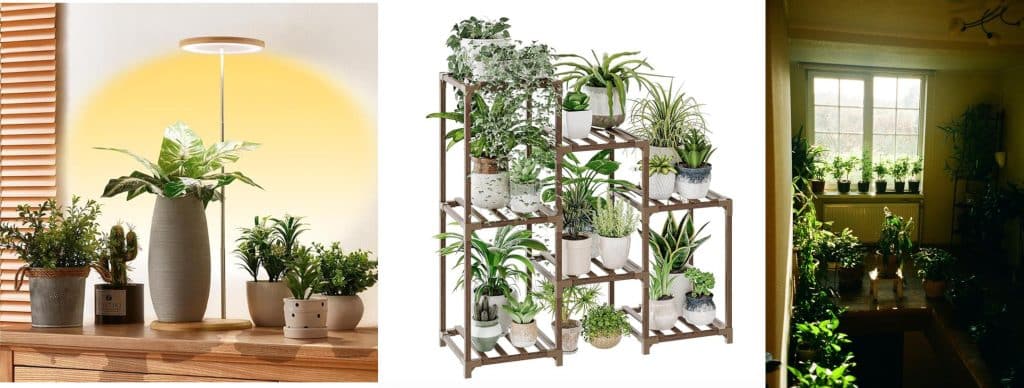
Accent Lighting: Highlighting Your Tree’s Beauty
We love using soft uplighting—a small LED spotlight placed at the base of the tree—to highlight its shape and create a cozy glow at night. This works especially well with tall, sculptural trees like the Weeping Fig or Rubber Tree, and doesn’t look ugly.
For a softer, whimsical touch, wrapping fairy lights around the trunk or weaving them through the lower branches creates a warm, inviting ambiance. We tried doing this with our Corn Plant in the reading nook, and now it feels like it belongs in a dreamy, indoor garden. If we’re using fairy lights, we opt for warm white tones instead of bright white to keep things subtle and natural-looking.
Macramé and Wall Decor: Framing the Tree as a Design Feature
We’ve found that a tree really stands out when it’s framed by the right decor. A large indoor tree against a blank wall can feel isolated, but adding macramé wall hangings, floating shelves, or a bold framed print creates a sense of structure around it.
For a boho-style setup, we like to pair a Bamboo Palm with a woven macramé wall hanging behind it. The mix of greenery and textured fiber art gives the space a relaxed, earthy vibe. In a more modern setting, a monochrome or abstract art piece behind a Rubber Tree makes the tree feel like part of the room’s design rather than just an afterthought.
Planter Stands and Risers: Adjusting Height for a Balanced Look
We’ve had trees that looked a little… awkward until we elevated them on a planter stand. Sometimes, a tree’s foliage starts a bit too low, making it feel bottom-heavy. Placing it on a wooden or metal plant stand gives it a lift, making it more proportionate to nearby furniture.
For example: our Dracaena felt too short next to the sofa, so we placed it on a 10-inch mid-century wood riser. Suddenly, it looked intentional instead of like we just plopped it there. If a tree is too tall, we go the opposite route—placing shorter plants around its base to create a tiered effect.
Seasonal Styling: Keeping the Look Fresh Year-Round
Switching up decor with the seasons keeps our trees looking fresh without changing the plant itself. In winter, we wrap soft string lights around the trunk for a cozy feel. In fall, adding warm-toned dried leaves or pampas grass in a nearby vase creates a moody, seasonal look.
For spring and summer, we lighten things up with woven baskets and airy, white planters. We’ve even placed seashells or small stones on top of the soil in warm months for a subtle seasonal shift. These little decor changes make sure our trees always feel like part of the home’s evolving aesthetic.
Common Styling Mistakes to Avoid with Low-Light Trees
Placing in Completely Dark Corners
One of the most common mistakes we see (and have made ourselves) is assuming that “low light” means “no light.” Just because a tree is tolerant of dim conditions doesn’t mean it can survive in a pitch-black corner. We once put a Corn Plant in the farthest corner of the dining room, thinking it would do fine, only to watch it slowly drop leaves. Even low-light trees need at least some indirect or ambient light to thrive.
Now, if we have to place a tree in a darker part of the room, we make sure it’s near a mirror or light-colored wall to reflect any available light. If that’s not enough, we use a grow light disguised as a decorative floor lamp—it blends into the decor while giving the tree what it needs.
Read also: how to keep low light indoor trees healthy
Overloading with Decor That Overshadows the Plant
It’s easy to go overboard with styling, but too many accessories can overwhelm the tree rather than highlight it. We once placed a Lady Palm in front of a busy patterned wallpaper with a gallery wall nearby—instead of standing out, it got completely lost. The key is making sure the tree still feels like a natural focal point, not just another item in a cluttered space.
Now, we focus on balance—if the tree has bold, dramatic foliage (like a Rubber Tree), we keep the background simple. If the room already has strong decor elements, we let the tree be the grounding piece by placing it in a neutral-toned planter that complements rather than competes.
Ignoring Growth Patterns
Not all trees stay the size they are when we first bring them home. Before placing a tree, we always check its mature height and width—and we plan ahead. For tall growers like Fiddle Leaf Figs, we leave at least two feet of clearance from the ceiling. If a tree naturally spreads wide, we make sure it’s not crammed between furniture that will restrict its growth.
Conclusion
Low-light indoor trees don’t just survive in dim spaces—they thrive when styled correctly! The right planter, placement, and complementary decor can turn any room into a lush oasis. Whether you want to create a minimalist, modern, or cozy boho look, there’s a way to style your tree to match your aesthetic. Experiment, have fun, and let your trees be the natural focal point of your space!



